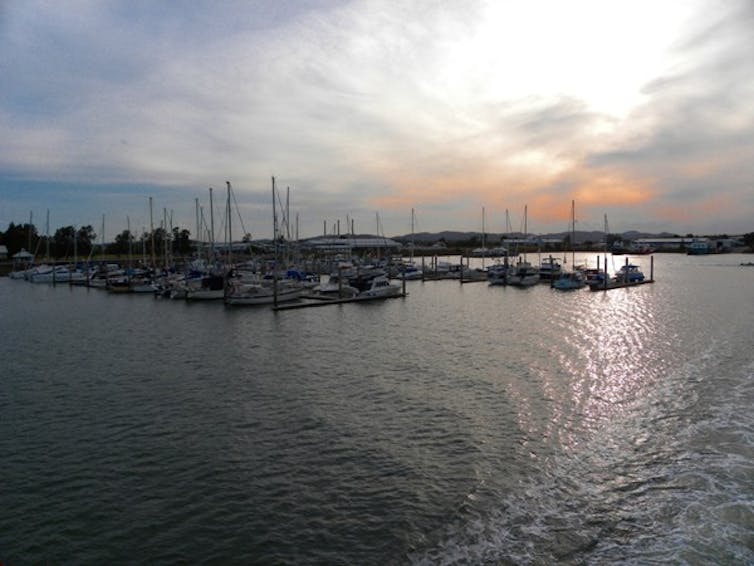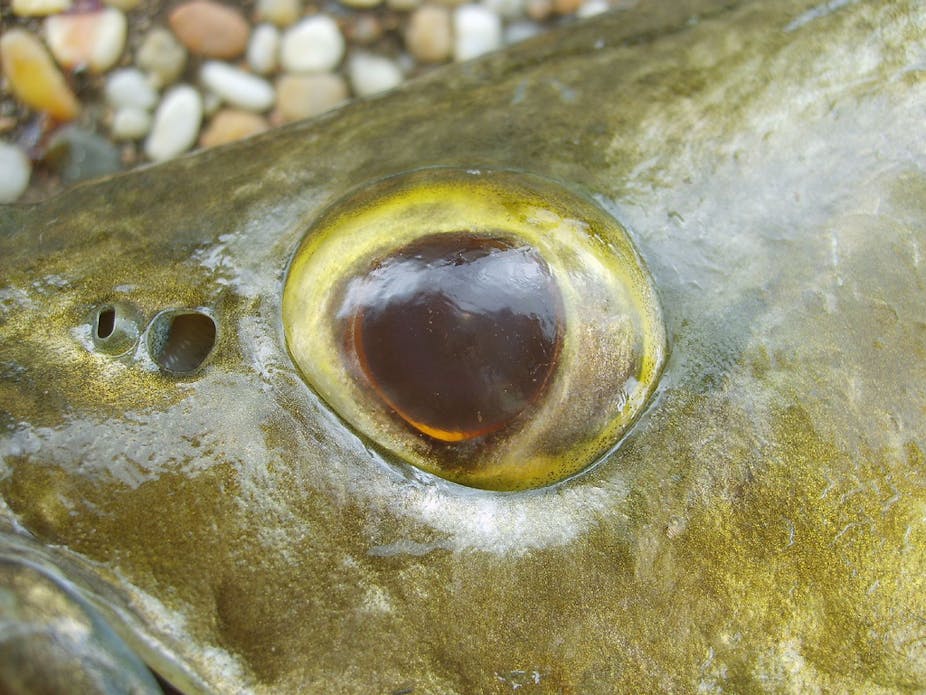Several individuals have required medical attention after a mystery disease appeared to spread to humans from fish in waters near Gladstone, Queensland.
Fishing bans are currently in place and local residents have been told not to eat local seafood.
While little is known about the disease, test results from several affected fish are due to be released in the coming days.
Environmentalists, such as Dr Andrew Jeremijenko, have suggested that the dredging of Gladstone Harbour – to accommodate the burgeoning liquified natural gas (LNG) development on nearby Curtis Island – could be to blame for the disease.
So how much of an effect does dredging have on water quality? And how does a change in water quality affect the health of fish species?
Associate Professor Dean Jerry, Head of Aquaculture at James Cook University shared his thoughts.
What do we know about the disease so far?
From my understanding, we don’t know a great deal. It appears to be a new occurrence, possibly a virus that’s just shown up suddenly at the start of the dry season here in North Queensland.
These sorts of epidemics are quite often caused by two factors. One is the introduction of a new disease which hasn’t been in the region before and which infects local fish species.
Second, from an aquaculture perspective, we often find that when disease becomes a problem some environmental stressor has occurred. These environmental stressors can lower the immune system of the fish species and their ability to combat disease or pathogens which are out in the water all the time, but are not normally a problem.
In this instance we don’t really know whether it’s the introduction of a new disease or some environmental change which has sparked an epidemic.
What sort of environmental effects could cause something like the outbreak we’ve seen?
Generally what we find is that water quality is a big environmental stressor that affects fish. If there are suddenly a lot more nutrients in the water, or toxins in the system, the fish have to work a lot harder to osmo-regulate (or process through their metabolism) their own nutrients. This places much more stress on the physiology of the fish.
If oxygen levels in the water drop, that places a lot of stress on the fish too. But in an aquaculture context it’s normally water quality in terms of nutrification that’s the main issue.
Some people have pointed the finger at the dredging of Gladstone port, suggesting it’s probably having a negative impact on marine life. What do we know about the effects of dredging on water quality?
What happens with dredging is that you stir up sediments on the ocean floor. Once you get down below the first couple of centimetres, that sediment is quite often what we call a deoxygenated environment, where there’s a lot of things such as heavy metals and hydrogen sulphide gas.

Normally this deoxygenated environment remains sequestered under an oxidised layer where the water meets the soil, and toxic metals and nutrients don’t enter the water column. As soon as you start dredging you release all the deoxygenated soil sediment and nutrients. This may have a toxic effect in itself.
As soon as these compounds hit the water column they start to oxidise. This can draw a lot of oxygen out of the water and create a chemical oxygen demand, which means there’s less oxygen available for organisms to actually use. This places an additional stress on fish, weakens their immune response, and increases the possibility they might succumb to disease.
You and your research group have been studying barramundi for some time now. What sort of effect does the release of heavy metals and hydrogen sulfide have on barramundi, beyond limiting their access to oxygen?
When hydrogen sulfide gas is released it can damage the gills of the fish. Not only is there less oxygen in the water, but this gas burns the gills and lowers the fish’s capacity to take oxygen in.
There can be acidification in the blood too, because hydrogen sulfide is effectively a weak acid. Whether this is related to the appearance of the disease, I can’t say, but the changes in water quality will have played a part.
This could also have been a result of the big wet season we just had, where a lot of sediment, nutrification and possibly toxins from agriculture (such as pesticides) entered the system.
All of this means fish have to work a whole lot harder to maintain their osmo-regulation and energy balances and this places stress on the immune system. And then, if there is a pathogen out there, the opportunities for it to become a lot more pathogenic and spread widely throughout the population is greater, because the general resilience of the population to disease is lower.
Problems with fish started to emerge as early as February but we’ll only see test results today, at the earliest. There has been some criticism that it took the relevant authorities too long to start this testing. Do you think that’s a fair criticism?
I don’t know much about the response time but from talking to people in Gladstone a few months ago, I know they were aware of the disease and were starting to react.
Fish disease outbreaks and deaths are very hard to analyse because there are often so many interacting factors. It’s very difficult to put your finger on what the critical causative factor might be.
Getting enough samples at the right time is also very hard to do because once an animal dies it becomes less and less easy to find out why it died, to figure out whether you’ve got a pathogen present.
So response times, particularly if you’ve got an unknown agent, can actually be a lot longer than people would like to see. Agencies often don’t have diagnostic tools for diseases they can instantly use and identify, particularly if it is a new disease agent. This might be why the response was a little bit slower than people hoped.

Do you think the authorities only got involved because there’s a potential human health risk?
Occurrences of the disease may only have been from anecdotal evidence initially, and quite often government agencies don’t react to anecdotal evidence as quickly as maybe they should.
But once people start talking about a possible human factor, that certainly adds a whole new dimension to the response time.
What quite often comes out of these situations – particularly when you have an interface between industry, the environment and human health – is it instigates more intensive monitoring of the environmental impacts of what industry is doing, and understanding the biological systems and how they’re impacted, the environment and how it’s impacted.
We saw a similar case in Mt Isa late last year. For many years people suspected there was a problem of increased lead in aerosols due to mining.
It wasn’t until they tested the children and found they had elevated lead levels that the government started to get serious about regulating the industry a bit harder.
Is there anything we can learn from the Gladstone fish case?
Hopefully what will come out of it is a deeper understanding of how industry, dredging and agriculture affect the environment and how exotic disease can enter a system and spread.
There will be new knowledge that comes out of it for sure and that will benefit our understanding later on if problems arise in other places.

